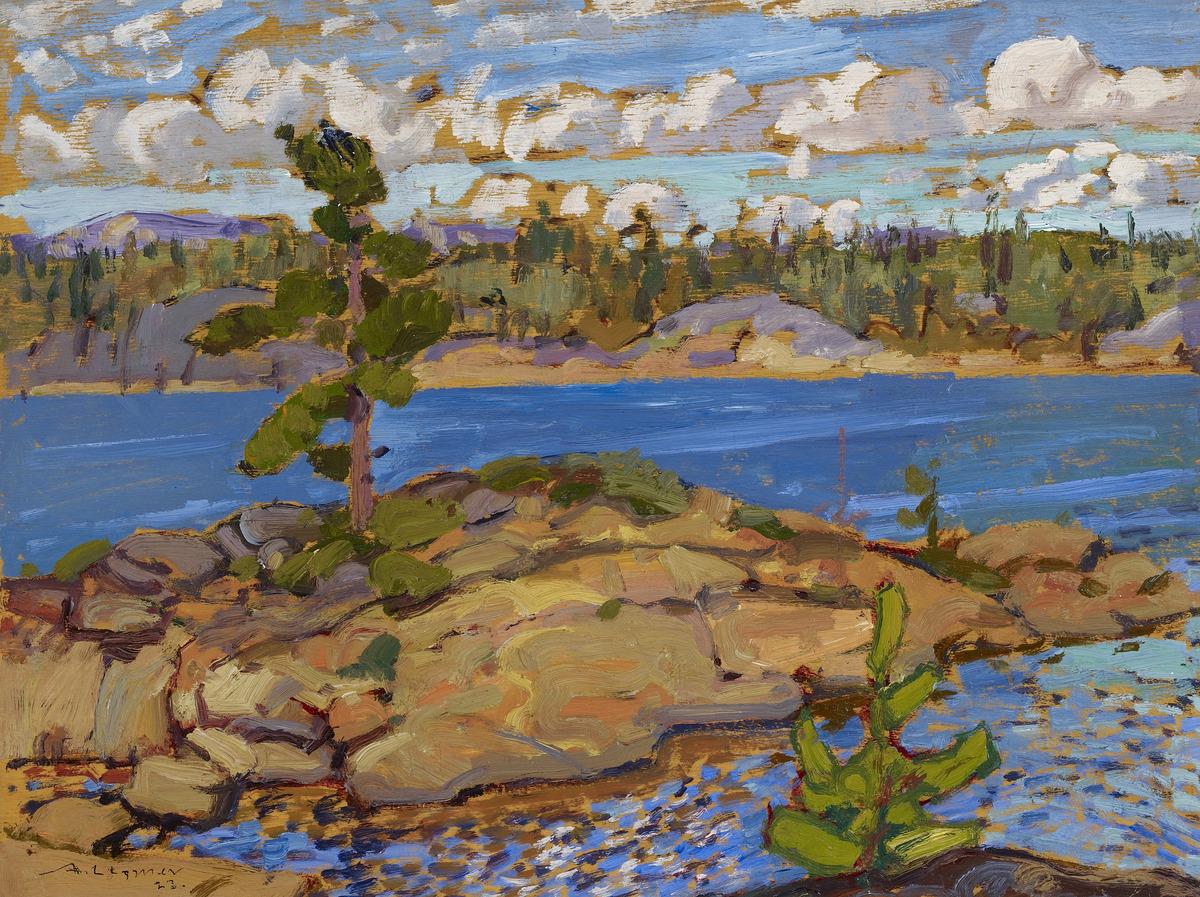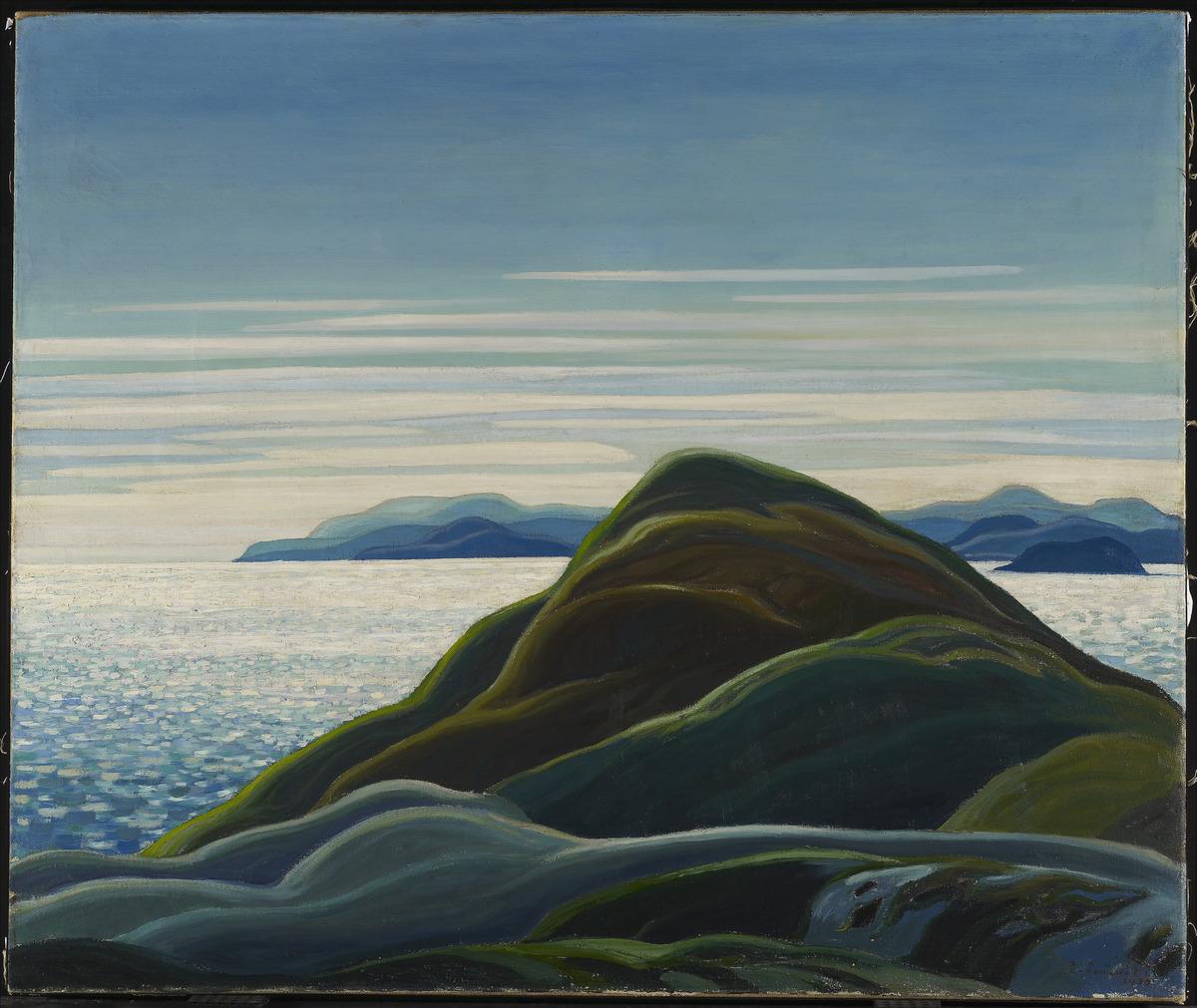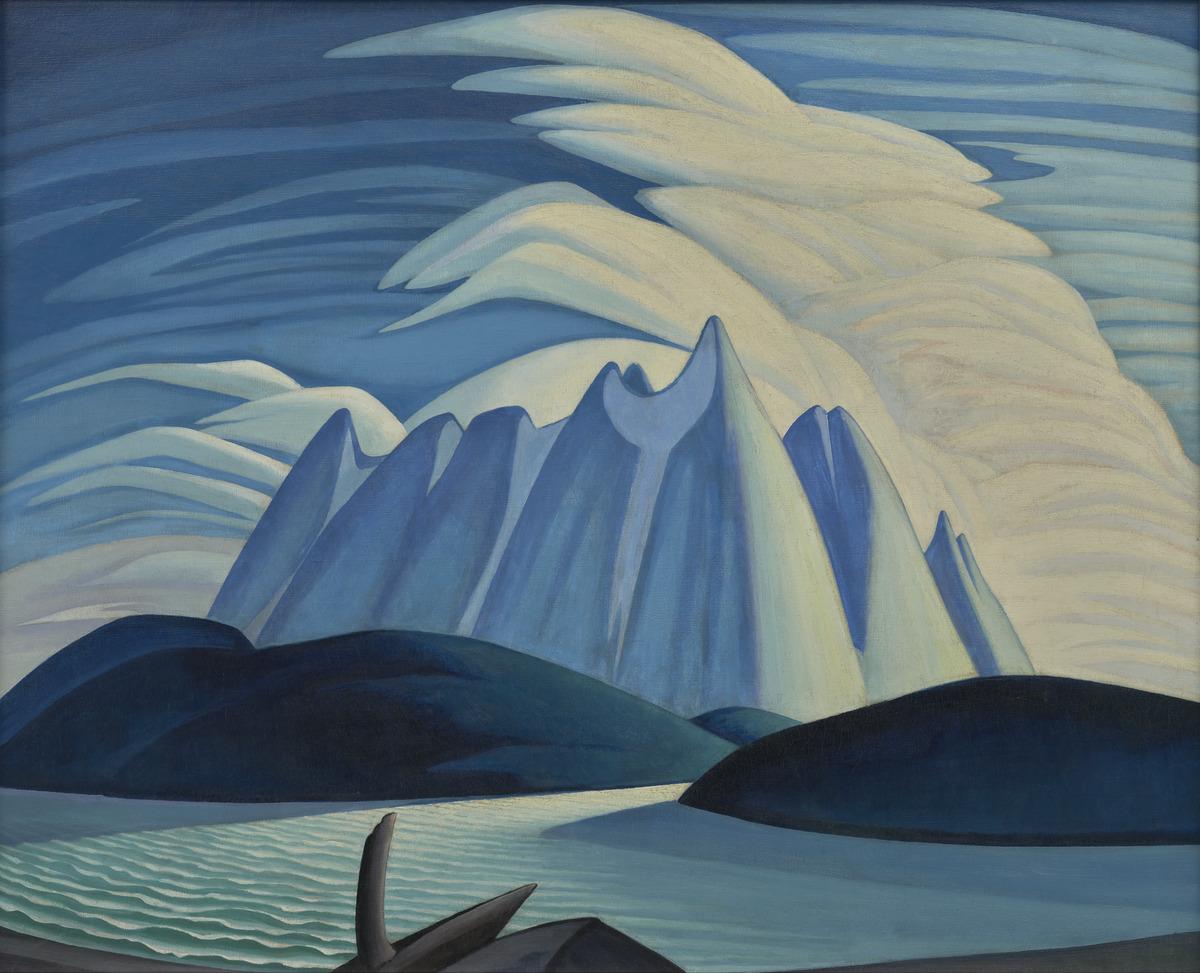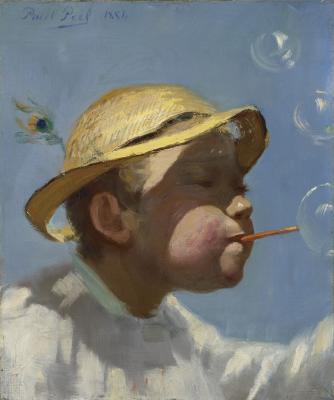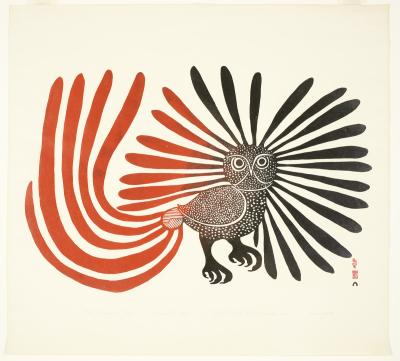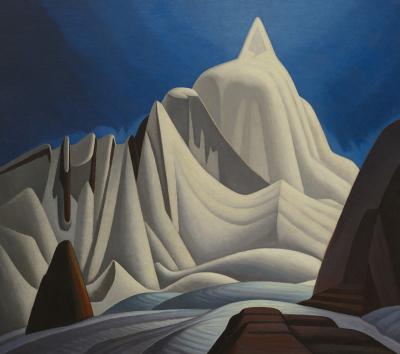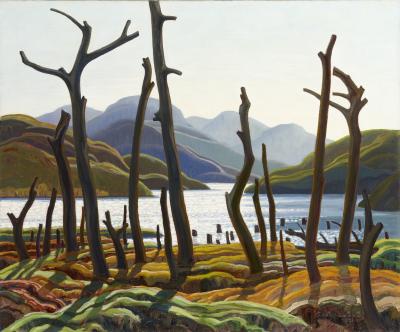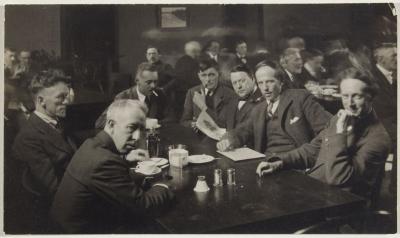Seven Facts You May Not Know About the Group of Seven
Did you know the Group painted more than just landscapes?
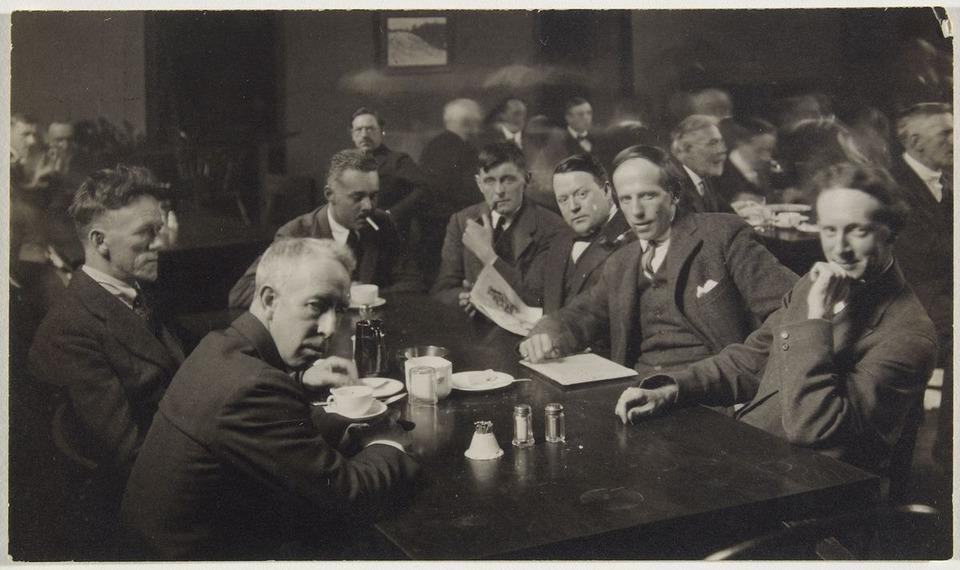
Arthur Goss. Luncheon at the Arts and Letters Club, Toronto. (A.Y. Jackson, F. Varley, L. Harris, Barker Fairley, F. Johnston, A. Lismer, J.E.H. MacDonald), c.1920. gelatin silver print, Overall: 9 x 12.2 cm. Art Gallery of Ontario. Transferred from the E.P. Taylor Research Library and Archives, Art Gallery of Ontario, 1996. Photo © AGO. 96/59
Let’s jump right in with a recent fact you may not know about the Group of Seven: July 7, 2025, marks Ontario’s first-ever Group of Seven Day. In 2024, the provincial government passed the Group of Seven Act, designating July 7 as a day to celebrate the Group’s significant contributions to Canadian art.
The Group of Seven was a school of Canadian painters who re-imagined Canada’s lakes, woods, and Arctic vistas through a collective vision of Canadian-style landscape painting. The original seven founding members include Lawren Harris (1885-1970), Franklin Carmichael (1890-1945), A.Y. Jackson (1882-1974), Arthur Lismer (1885-1969), J.E.H. MacDonald (1873-1932), Frederick Varley (1881-1969) and Franz (also known as Frank) Johnston (1888-1949).
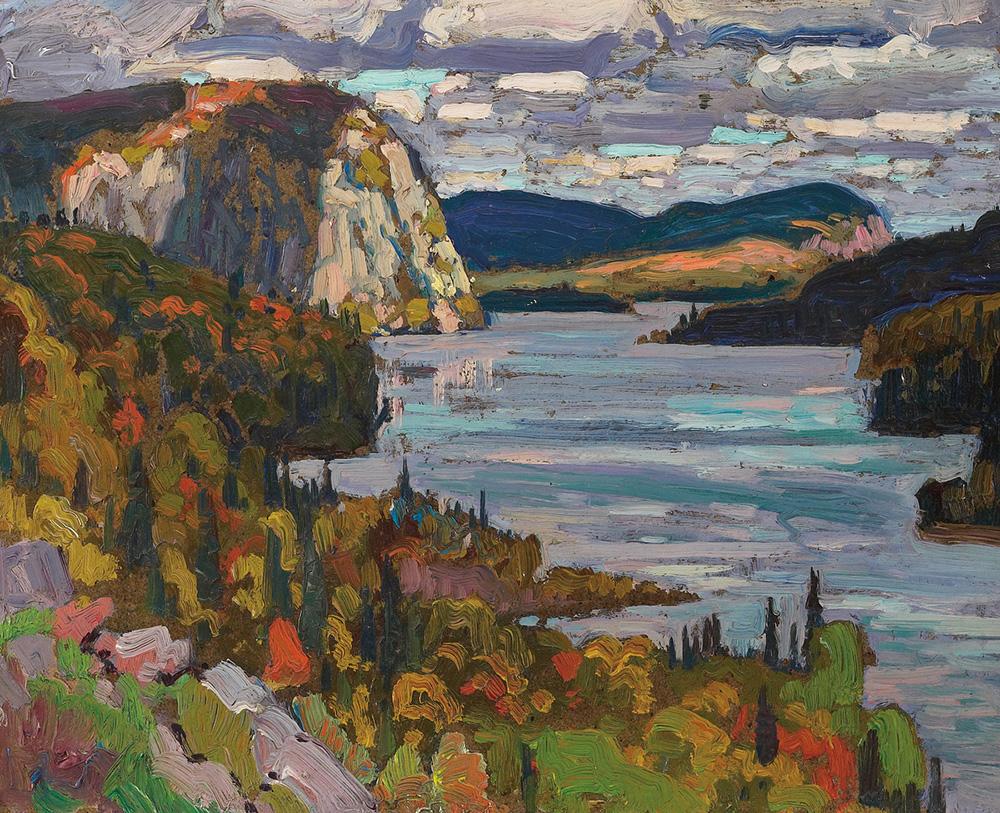
J.E.H. MacDonald. Solemn Land, Algoma, c. 1919. oil on composite wood-pulp board, Overall: 21.6 x 26.7 cm. Art Gallery of Ontario. Gift by Subscription, 1933. Photo © AGO. 2110
The Group of Seven believed that direct contact with nature was necessary for their artistic practices. Both as a group and individually, the Group of Seven embarked on canoe, camping, and hiking trips, allowing them to depict Canada’s wilderness in its most primal and majestic forms. Their paintings present expansive, spiritual and rugged depictions of Canada in a new, experimental painting vocabulary. They have inspired generations of artists who have both celebrated and responded critically to the Group’s mythic vision of Canada.
Whether they were household names growing up or a Canadian artist collective you’re just beginning to explore, here are seven facts about the Group of Seven that you may not know.
1. They Painted More Than Just Canadian Landscapes
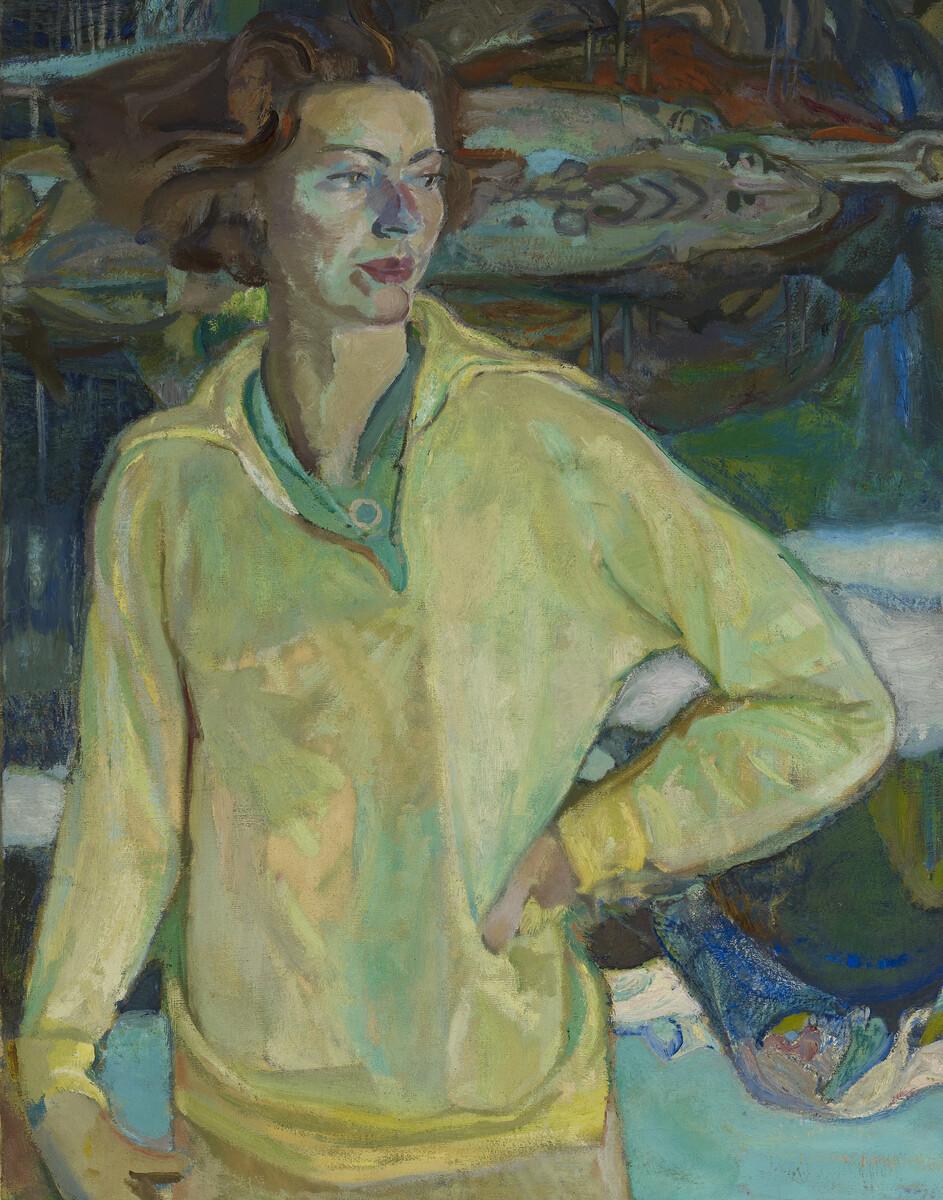
Frederick Horsman Varley. Portrait of Vera, c. 1935. Oil on canvas, Overall: 90.8 x 70.5 cm. The Thomson Collection at the Art Gallery of Ontario. Photo © AGO. 2022/7142
While the Group of Seven is best known for their iconic depictions of Canadian landscapes, this wasn’t the only subject matter the group tackled. They also painted portraits, urban scenes, gardens, and war memorials. Varley was primarily regarded as a figure and portrait painter, though his landscapes, such as Stormy Weather, Georgian Bay (1921), are widely loved.
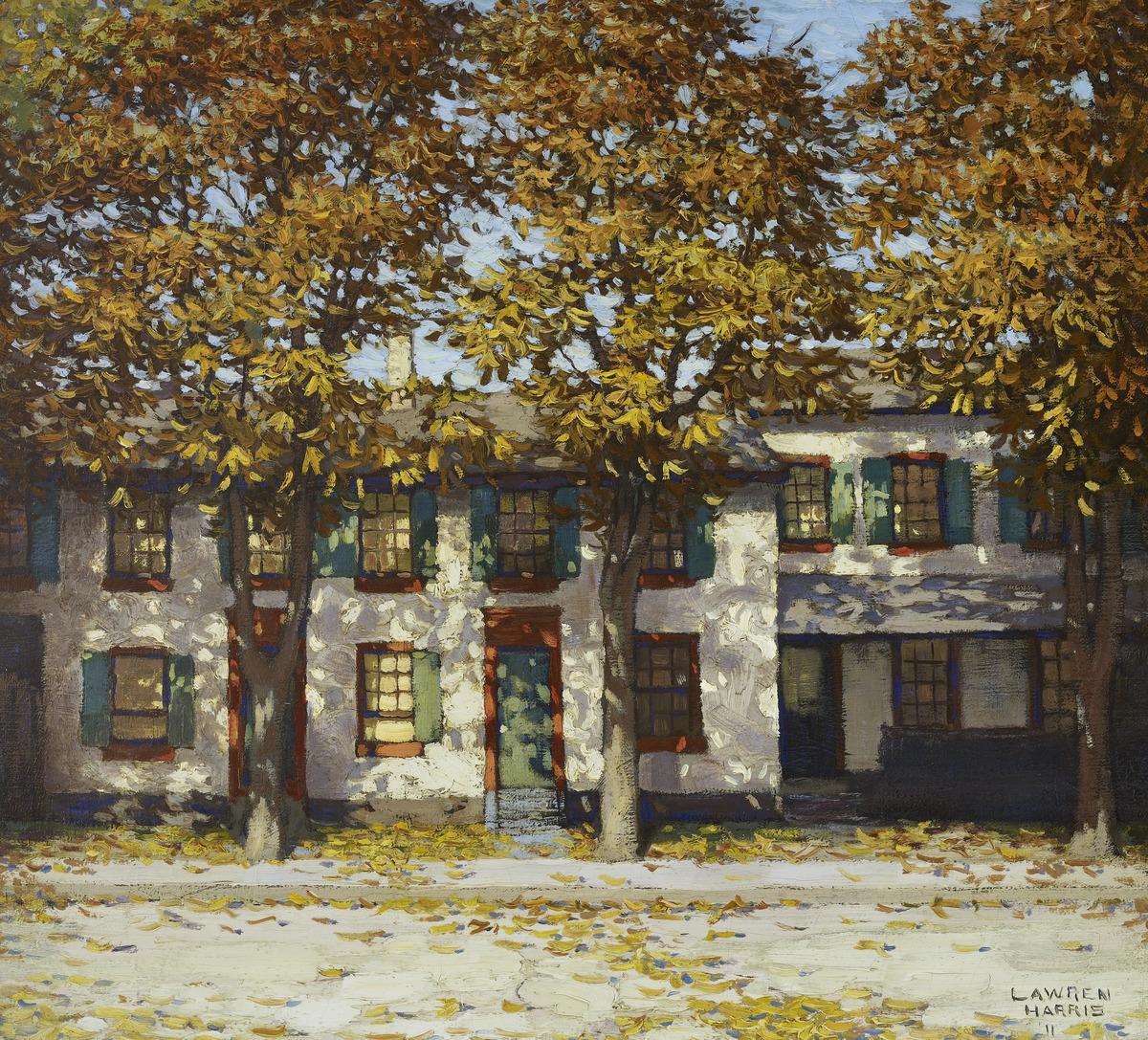
Lawren S. Harris. Houses, Richmond Street, 1911. Oil on canvas, Overall: 61.1 x 66.6 cm. The Thomson Collection at the Art Gallery of Ontario. © Family of Lawren S. Harris, Photo: Michael Cullen. AGOID.103941
Before their camping trips to Northern Ontario, members of the Group spent a fair amount of time painting in Toronto. Harris spent much of his early career painting urban life in The Ward, a Toronto neighbourhood home to new immigrants in the 19th and 20th centuries, while MacDonald began his painting career by capturing the greenery in Toronto’s High Park. His vivid paintings of the park caught Harris’ eye, and the pair began exhibiting together prior to the formation of the Group of Seven.
2. Many Members of the Group Emigrated from Europe
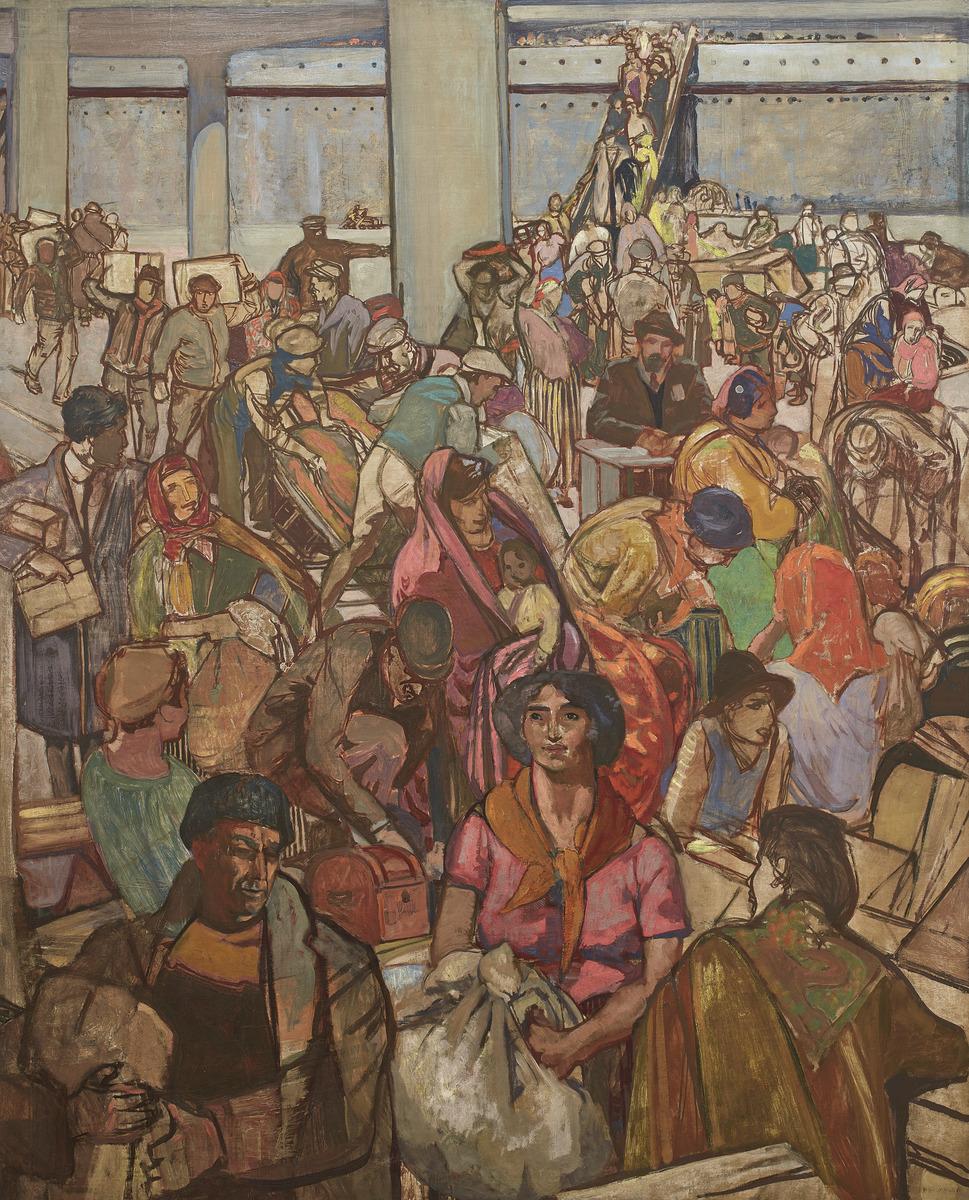
Frederick Horsman Varley. Immigrants, c. 1922. oil on canvas, Overall: 182.9 x 152.4 cm. The Thomson Collection at the Art Gallery of Ontario. Photo © AGO. AGOID.104090
There’s no denying that the Group of Seven are some of Canada’s most beloved painters. But you may be surprised to know that three members were British immigrants. Lismer, MacDonald, and Varley were all born in England and immigrated to Canada at various times – Lismer at 26, MacDonald at 14, and Varley at 31. Varley and Lismer were both from Sheffield, England, and studied at the Sheffield School of Art. It was Lismer who convinced Varley to immigrate to Canada.
Another fun fact: Out of the remaining founding members born in Canada, Jackson is the only member from Quebec. The rest of the founding group was born across Ontario.
3. Tom Thomson Was Not a Member of the Group of Seven
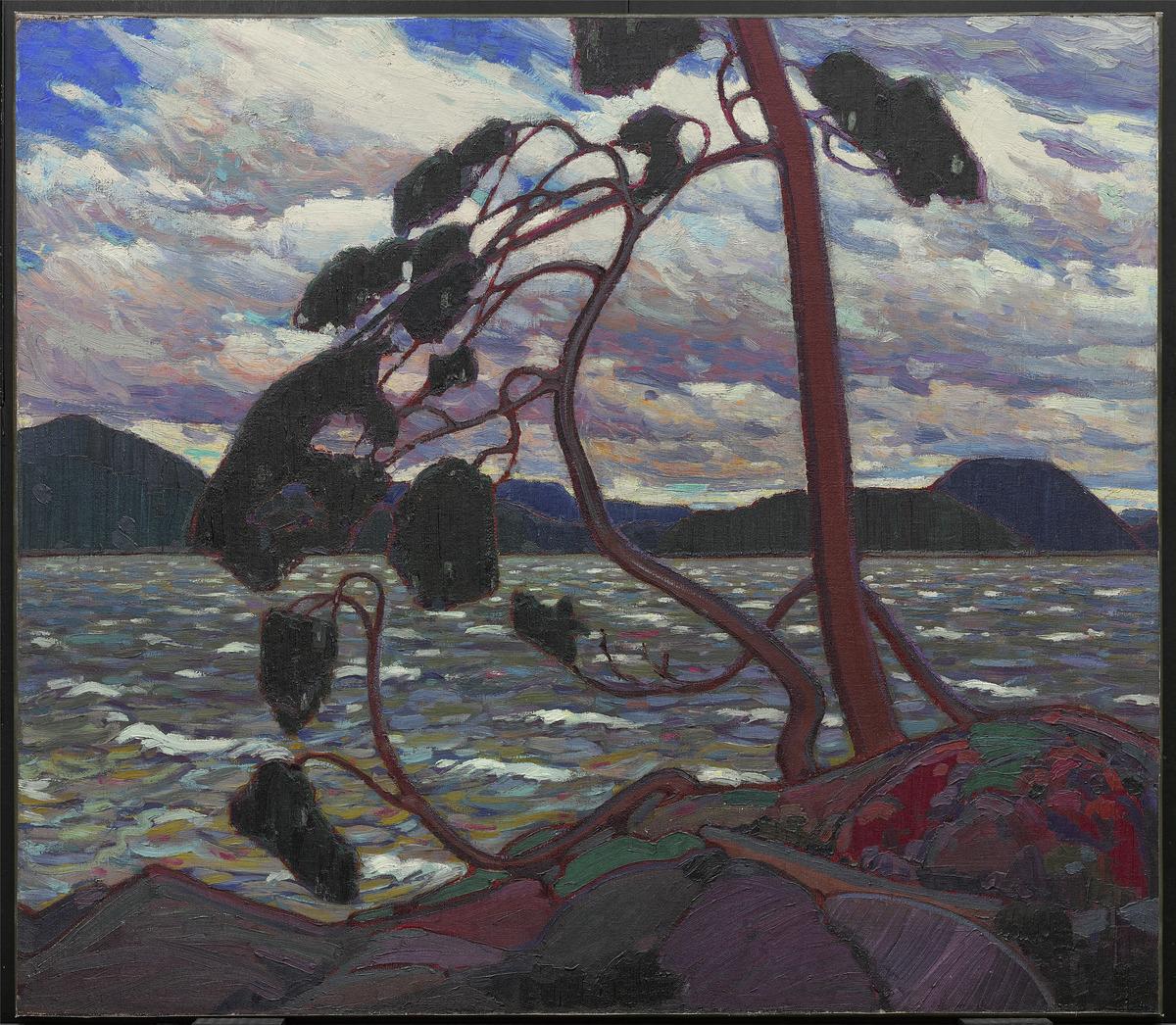
Tom Thomson. The West Wind, Winter 1916-1917. Oil on canvas, Unframed: 120.7 × 137.9 cm . Art Gallery of Ontario. Gift of the Canadian Club of Toronto, 1926. Photo © AGO. 784
Contrary to popular belief, Tom Thomson (1877-1917) was actually not an official member of the Group of Seven. Thomson passed away in a mysterious drowning incident at Algonquin Park three years before the Group officially formed.
However, Thomson was a respected colleague, friend, and inspiration to the Group of Seven. In Harris’s words, “Thomson was... as vital to the movement, as much a part of its formation and development, as any other member."
Thomson, who painted and worked as a fire ranger in Algonquin Park, inspired the Group of Seven to head into Northern Ontario’s wilderness with their sketchbooks. Thomson was revered for his depictions of Algonquin Park, and his paintings, shadowed by his mysterious death, have made him a Canadian icon.

Maud Varley. Photograph of Group of Seven members in Algonquin Park: Tom Thomson, F.H. Varley, A.Y. Jackson, Arthur Lismer, Marjorie Lismer and Mrs. Ester Lismer in Algonquin Park, Ontario. Edward P. Taylor Library & Archives. Photo © AGO.
4. Several Members Worked for Commercial Art Firms
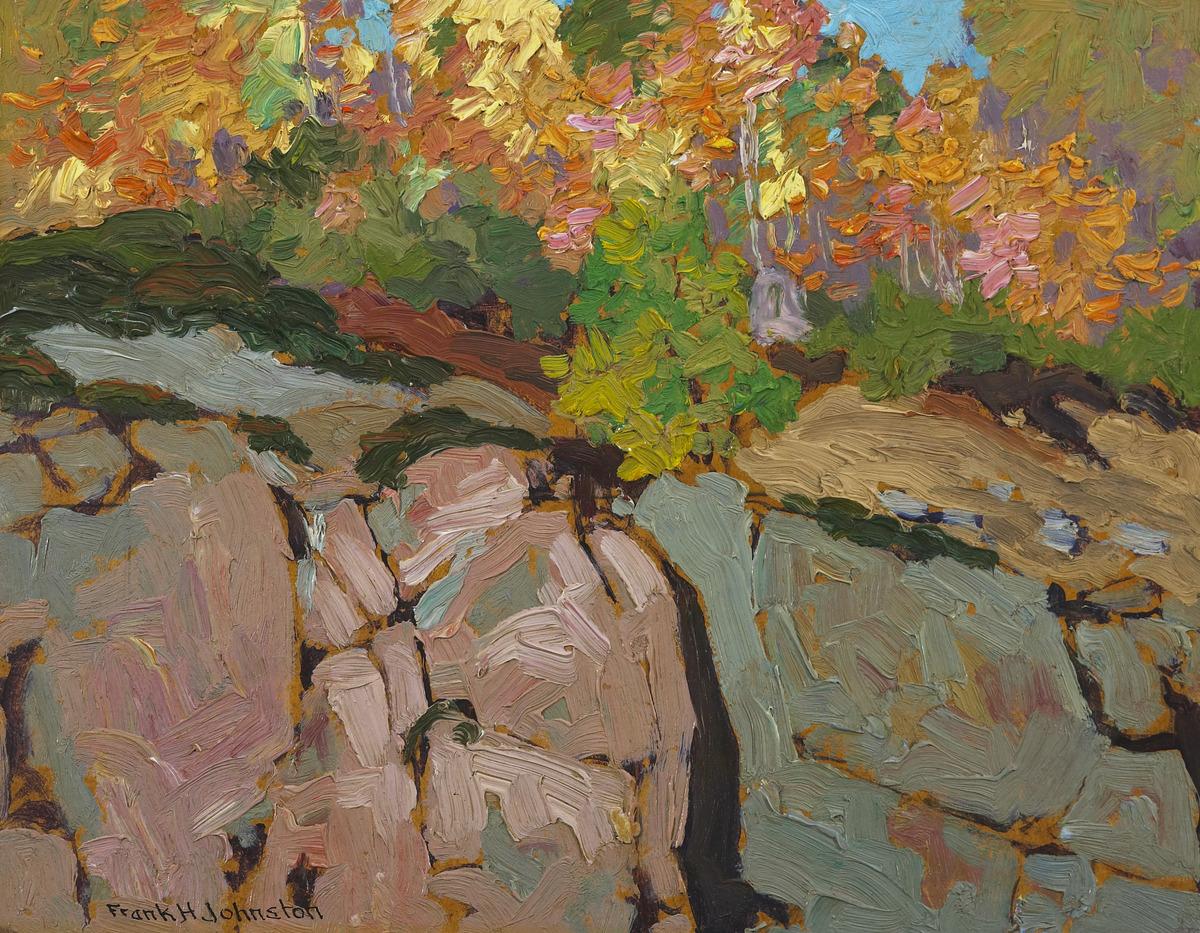
Franz Johnston. Autumn - Algoma, c. 1917. Oil on paperboard, Overall: 26.6 x 33.6 cm. The Thomson Collection at the Art Gallery of Ontario, 2017. Photo © AGO. 2017/228
To earn a living, many members worked as graphic designers – five of the seven founding members even worked at the same company. Carmichael, Lismer, Johnston, Varley and MacDonald worked at Grip LTD, a leading graphic design company at the time that specialized in design and lettering work. The company is credited with introducing metal engraving and the four-colour process to Canada. Thomson also worked at Grip LTD, acquainting him with several members of the Group of Seven. MacDonald was a senior artist at the firm and encouraged his colleagues, including Thomson, to paint outside to develop their skills as designers.
Jackson also worked at a commercial art firm in Chicago during his early career and used his earnings to study Impressionism in France before returning to Canada.
Unlike the other members, Harris was the heir to his family’s fortune, which allowed him to focus solely on his painting career.
5. It Wasn’t Love at First Sight
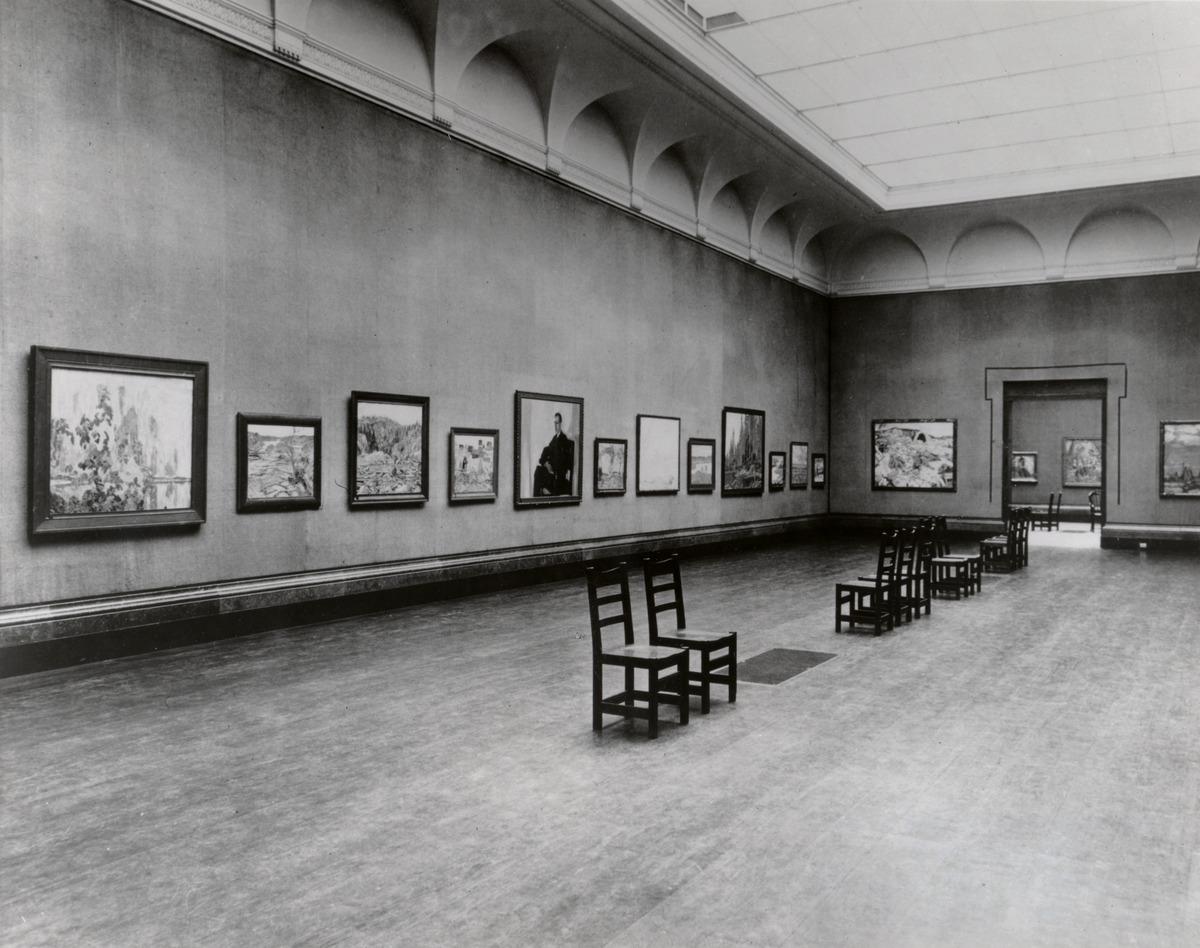
Group of Seven Exhibition Catalogue, May 1920, Art Gallery of Toronto. Edward P. Taylor Library & Archives, Art Gallery of Ontario. Photo © AGO.
The Group of Seven may be well-loved by Canadians today, but their work was heavily criticized before it became revered. In 1920, the Group of Seven held their first exhibition at the AGO, marking the official launch of their association. In the pamphlet for the exhibition, Harris wrote, “The group of seven artists whose pictures are here exhibited have for several years held a like vision concerning Art in Canada. These images invite adverse criticism.”
And adverse criticism was given: “Are these new Canadian painters crazy?” asked The Canadian Courier. Art critic H.F. Gadsby infamously dubbed the group as “the HOT MUSH school,” a play on the group’s previous name “the Algonquin school.” Gadsby further called their work “more like a gob of porridge than a work of art.” Another critic called the Group of Seven’s paintings a “cruelty to landscape.” The group ended up selling only five of the 121 works on view during that exhibition.
6. Seven Became Ten (Plus One Honorary Member)
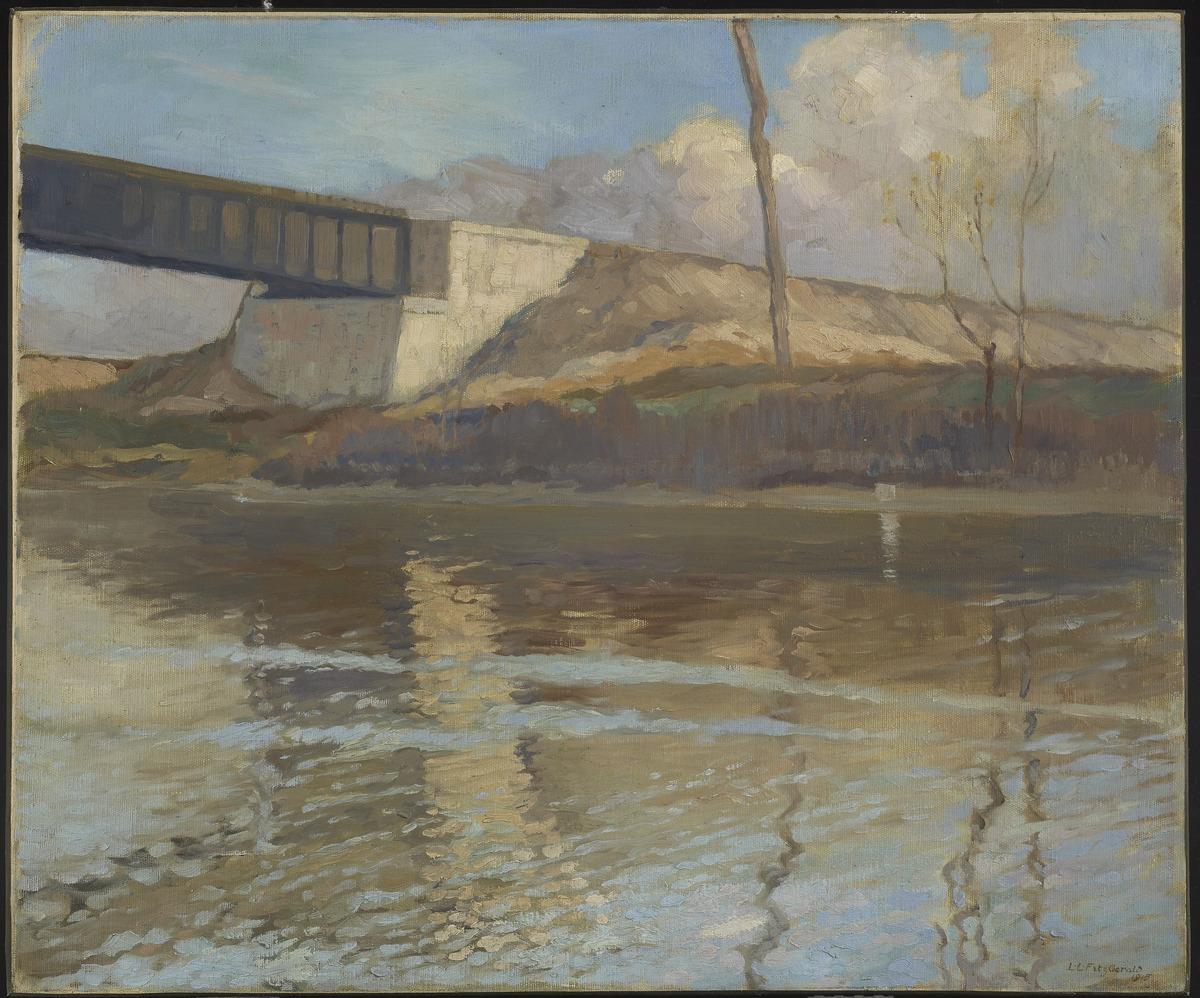
Lionel LeMoine FitzGerald. Reflections, 1915. Oil on canvas, Overall: 63.5 x 76.2 cm. Art Gallery of Ontario. Gift from the Douglas M. Duncan Collection, 1970. Photo © AGO. 70/34
As the Group of Seven evolved and members left or passed, three additional artists joined the collective: A.J. Casson (1898 – 1992), Edwin Holgate (1892 – 1997), and L.L. FitzGerald (1890 – 1956).
After Johnston left the group, Casson joined at the invitation of Carmichael. Casson was the youngest member of the Group of Seven, and mostly known for his works depicting landscapes, forests, and farms in Southern Ontario. Holgate later joined as the eighth member of the Group, known in Montreal’s art scene for his landscapes of the West Coast, as well as his series of female nudes set in northern landscapes. FitzGerald was the last to join after MacDonald’s passing in 1931. Based in Manitoba, FitzGerald was the only Group of Seven member from Western Canada.

Emily Carr. Trees in the Sky, 1939. Oil on canvas, Unframed: 111.6 × 68.7 cm. Art Gallery of Ontario. Gift of Richard M. Ivey, 2008. Photo © AGO. 2008/224
Like Thomson, Emily Carr (1871-1945) is closely associated with the Group of Seven, but was not an official member. However, Carr was an honorary member of the Group. Carr was one of Canada’s first Modernist and Post-Impressionist painters and is credited alongside the Group of Seven with starting Canada’s first modern art movement. Carr, who trained in the United States, England and France, painted landscapes heavily inspired by the Indigenous Peoples of the Pacific Northwest Coast. When Carr first met the Group in 1927, Harris told her, “You are one of us.” Harris subsequently dubbed Carr the “Mother of Modern Art in Canada.”
7. Arthur Lismer Laid the Foundation for the AGO’s Gallery School
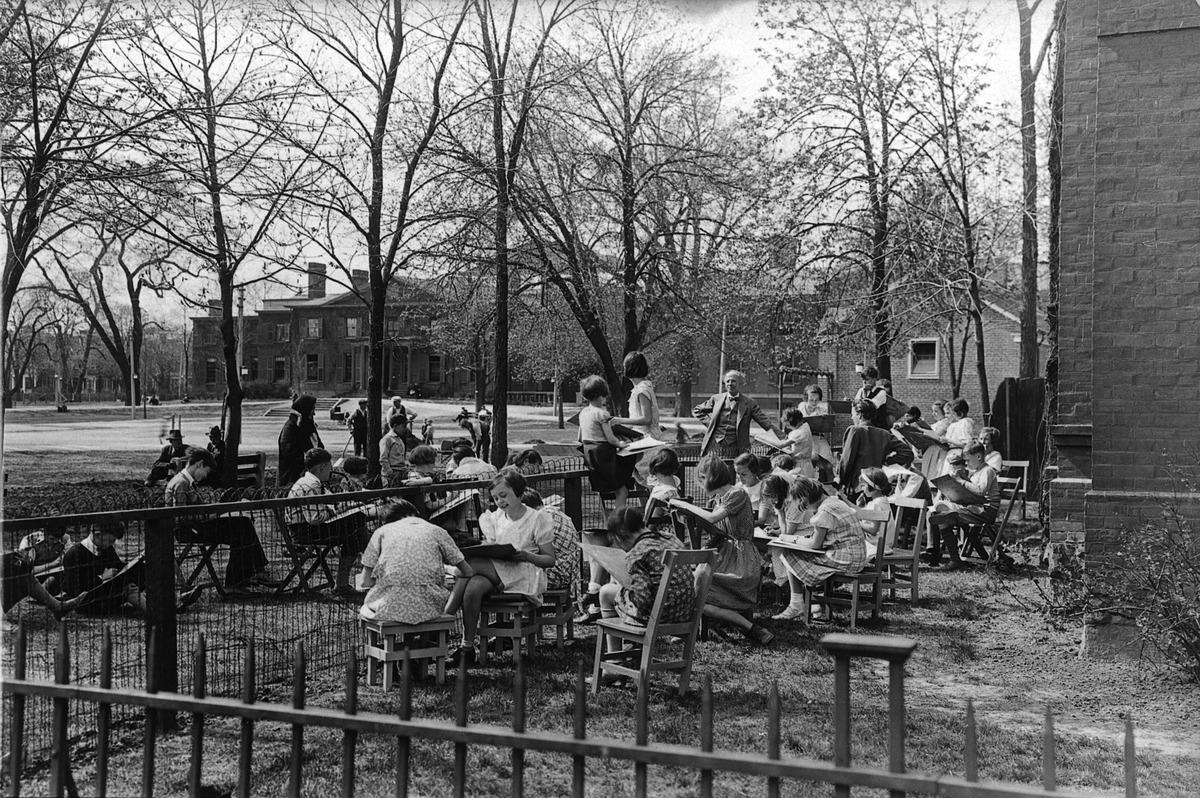
Arthur Lismer conducting a children’s outdoor sketching class in Grange Park in 1934. Edward P. Taylor Library & Archives, Art Gallery of Ontario. Photo © AGO.
Beyond his work as a painter, Lismer was a passionate art educator concerned with nurturing creativity in children. In 1928, Lismer was invited by the AGO (then known as The Art Gallery of Toronto) to establish an art school, an offer he happily accepted. Until 1938, Lismer designed and directed the Gallery’s education programs, which included Saturday morning classes for children, school programs, and adult studio classes. Before Lismer took the helm, the Gallery’s art education programs primarily focused on copying artworks and techniques from the instructor. However, Lismer believed art education should encourage self-expression from students, allowing them to bring their own “desires, inclinations, and dreams” to life.
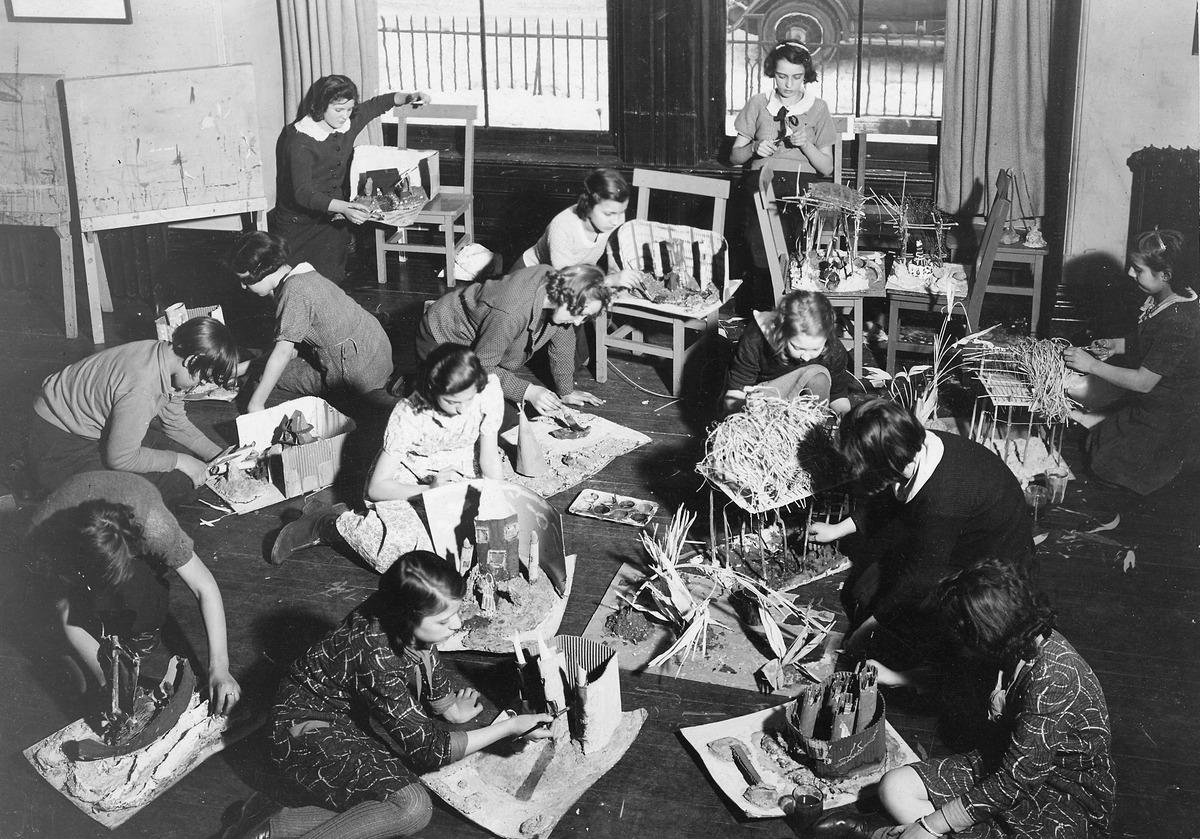
Big Sisters' Group at the Children's Art Centre - Making Habitats, 1936. From the publication: "Education Through Art for Children and Adults at the Art Gallery of Toronto" by Arthur Lismer (Toronto: Art Gallery of Toronto,1936), p.31. Edward P. Taylor Library & Archives, Art Gallery of Ontario. Photo © AGO.
Lismer incorporated visual art, music, theatre, and model making into his courses. When the weather permitted, he even held classes outside in Grange Park and took students on field trips across the city. His courses drew thousands of students from across the city, and when he launched his Saturday morning classes, parents lined up around the block in the cold February weather for the chance to enroll their child in the class. Lismer’s courses formed the foundation of the AGO’s Gallery School today, which continues to offer courses and programming for all ages.
Join the AGO in celebrating Group of Seven Day on Monday, July 7. The Gallery will be open from 10:30 am to 4 pm and will be hosting Group of Seven-inspired art making in Walker Court. Celebrate the Group of Seven year-round by visiting the Thomson Collection of Canadian Art, on view on Level 2 of the AGO. Please note that works in the Gallery are always on rotation, so the exact location of the works mentioned may change or they may be taken off view over time.
